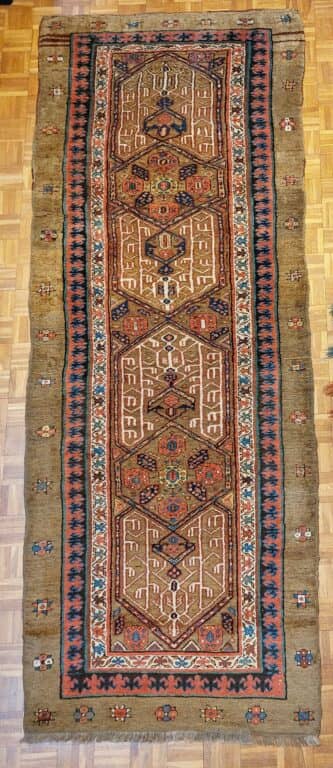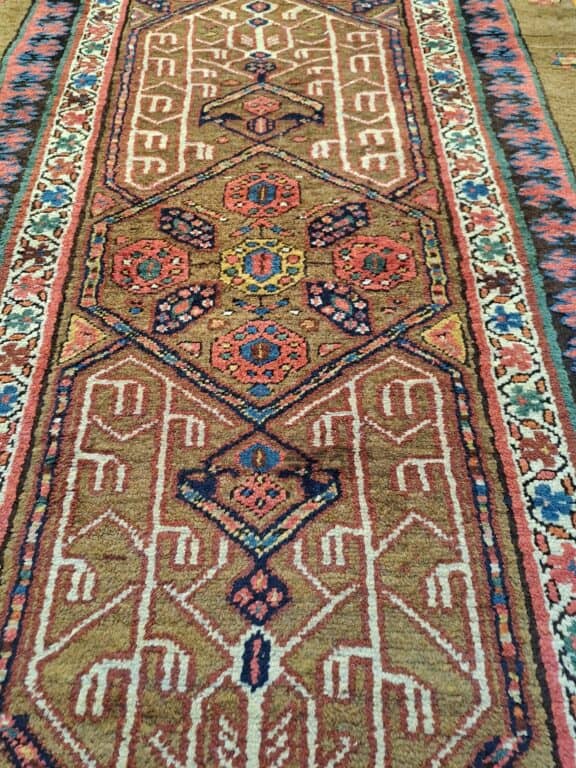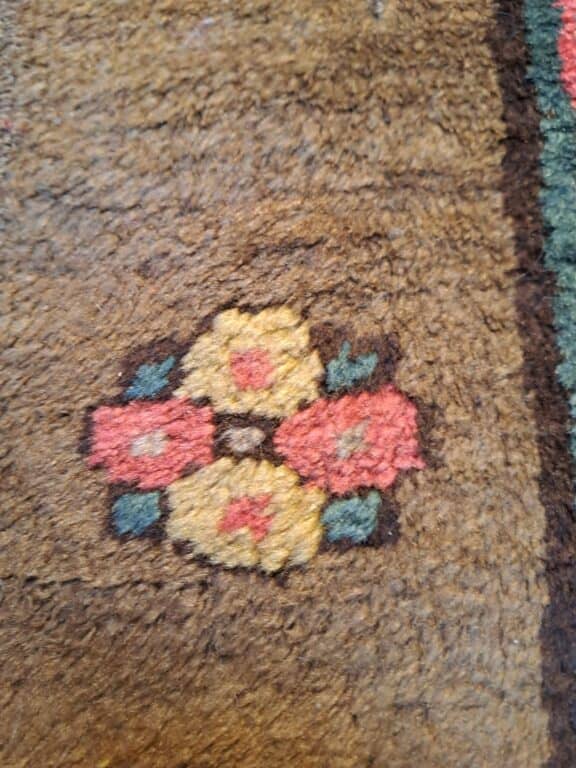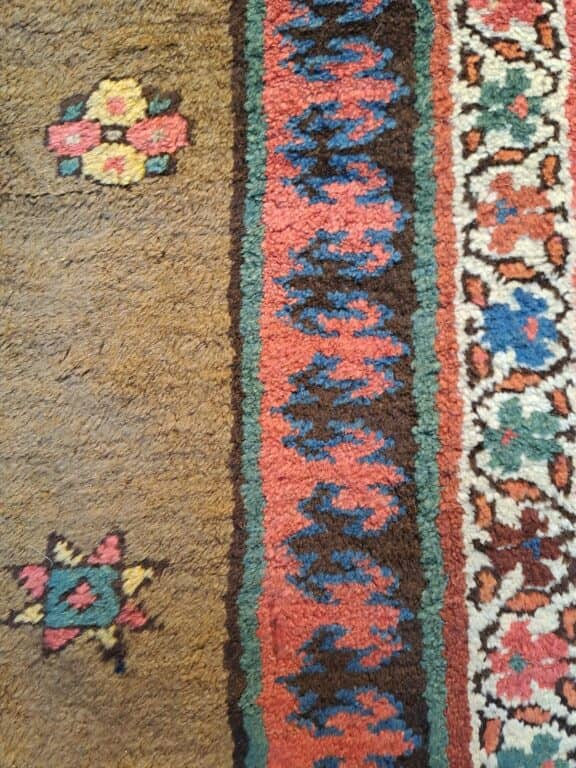Persian Sarab Runner
Description
This Persian Sarab runner dates to the second half of the 19th century. It originates in a group of villages roughly half way between Tabriz and Ardabil, to the south of what Edwards calls the “Heriz Area Proper” (Edwards, A. Cecil, The Persian Carpet. A Survey of the Carpet-Weaving Industry of Persia. London, Duckworth 1975, p.62)
According to Edwards, the weaving area of Sarab consisted of around 20 villages (this refers to the time of the first edition of the publication mentioned above, which was 1953). It is worth quoting a longer passage from his survey:
“The better grades were woven in Sarab itself and in the nearby villages, and are called in Tabriz after the town of Sarab. The best woven and the most prized among them have grounds of a lovely shade of camel, with copper-red lozenge-shaped medallions.” (op.cit., p.67) He goes on to say that most weaving in this area was concentrated on the production of runners and had almost completely ceased when he visited in 1948. Edwards speculates that the main reason for this decline was the fact that runners were a lot less profitable for the weavers than large carpets like Heriz carpets, say. He quotes square-metre prices achieved in the Tabriz bazaar as twice the amount for a Heriz carpet compared to a Sarab runner, so a perfectly reasonable assumption.
The piece in hand is clearly in the category of the superior quality of weaving. It has a dense weave and is still in full pile, with one small patch at the bottom end. The colour scheme, too, is typical of this type: a pinkish red, light blue, green, yellow and white on the camel coloured ground.
Outstanding in this runner is the reciprocal border, which is flanked by the bold outer border of widely spaced individual stars on a camel ground – what a stroke of genius!
This is a highly collectible rug for any carpet lover.




